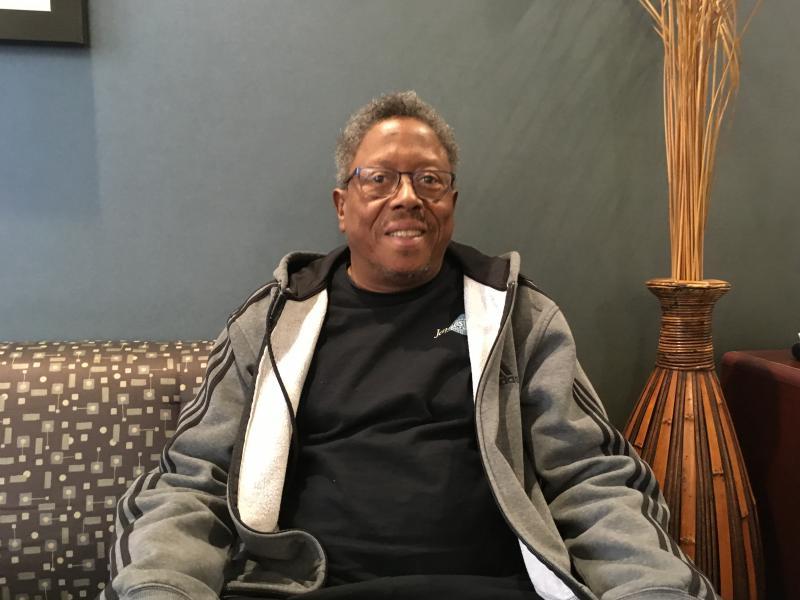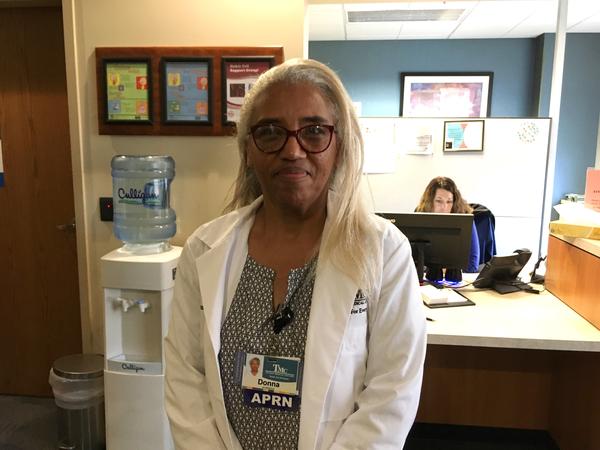Long before Eric Kirkwood of Kansas City, Kansas, had his first sickle cell crisis at age 17, he knew about the pain caused by the disease. His uncle and sister had the genetic disorder, which causes blood cells to clump together and cut off circulation, leaving many patients with pain they describe like being squeezed in a vise.
“I’ve been in so much pain that I’m like, ‘Why am I not dying?’” Kirkwood said. “It’s really like torture.”
For the 100,000 mostly black people in the United States who have sickle cell disease, the combination of acute crises and chronic pain can be debilitating.
Treatment guidelines allow for high levels of opioids, but many sickle cell patients are now worried where recent crackdowns on opioids will leave them, particularly after a long history of misunderstanding about the disease.
Sickle cell can cut life expectancy by decades, and, until recently, treatment was mostly palliative care — treating the pain without much thought to the consequences.
Kirkwood found relief in opioids that were as dangerous as they were potent.
“Demerol was the bomb!” said Kirkwood, who’s now on the board of the Uriel E. Owens Sickle Cell Disease Association of the Midwest, created in honor of his uncle. “Something like that, it’s easy to get addicted to.”

Today, 40 years after Kirkwood’s first pain crisis, newer drugs that improve blood function have improved the quality of life for many patients, and concern about the harms of opioids have led sickle cell specialists to take different approaches to treating pain.
Nurse practitioner Donna McCurry, who has about 100 patients under her regular care at the Sickle Cell Center at Truman Medical Center Hospital Hill in Kansas City, Missouri, encourages alternate treatments like meditation, music and exercise, which have been found to reduce the need for opioid treatment in chronic pain patients.
“I’ve had a couple of people get off it altogether, after being on it for years, and their pain is better!” McCurry said.
At the clinic, McCurry encourages patients to try anything that might help, including visits from Cooper, a cheery golden retriever therapy dog, who recently snuggled up to Kenneth James, a jazz pianist recovering from a sickle cell crisis.
But getting people in pain to give up pills in favor of dogs or mantras isn’t easy.
These patients often have to take so many opioids that they develop high tolerances, and as a result may need opioids at doses that would be dangerous for other people.
Some doctors treat these patients with suspicion, said Dr. Biree Andemariam, chief medical officer for the Sickle Cell Disease Association of America. “Providers and emergency departments and hospitals who are not particularly familiar with [sickle cell disease] may wonder why the patient is asking for such high doses,” Andemariam says.
Along with a lack of knowledge about the disease, researchers have found that, in general, doctors in the U.S. underestimate black people’s pain and the amount of pain medication they need. A handful of recent studies suggest that treatment differences may result from medical providers’ unconscious racial biases or false beliefs about biological differences among races.
Sickle cell patients are no more likely to abuse opioids than many other chronic pain patients, according to a research review conducted by researchers at Thomas Jefferson University in Philadelphia, but lots of them, like James, have horror stories about trying to get treatment.
“I’ve had one doctor in the ER tell me that 30 to 40 percent of patients with sickle cell were drug addicts, and that’s not true,” James said.
The challenge of getting opioid treatment could become even more fraught now that some states are limiting opioid prescriptions, government agencies are rewriting opioid guidelines and some insurance companies have even stopped covering some opioids.
For James, the possibility of lawmakers or insurers taking pain medications away brings back bitter memories of being denied care.
“They’re saying, ‘Well, we don’t want you to have it no more.’ What do you mean you don’t want me to have it no more? I need that! At least to survive!” James said. “You don’t have it. You can’t relate, but you’re going to make the rules and the law. I don’t think that’s fair.”
Kirkwood recently told McCurry that his pain has been pretty manageable lately. He credits herbal medicine and transcendental meditation, although Kirkwood said he does need occasional opioids on bad days.
McCurry acknowledged that many of her patients couldn’t get by without opioids, but she wants to see them on the lowest doses possible. But instead of taking away their pills, she tries to coach them on improving their lives.
“I know I can help you change this ’cause I’ve seen it,” McCurry said she tells people. “I know you don’t have to struggle with this the way you are, if we could just get past this ‘scrip thing.”
Alex Smith is a health reporter for KCUR. You can reach him through email: alexs@kcur.org.

